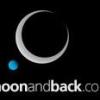A Rare Opportunity to See a Comet with the Naked Eye

PASADENA, Calif. — Comets visible to the naked eye are a rare delicacy in the celestial smorgasbord of objects in the nighttime sky. Scientists estimate that the opportunity to see one of these icy dirtballs advertising their cosmic presence so brilliantly they can be seen without the aid of a telescope or binoculars happens only once every five to 10 years. That said, there may be two naked-eye comets available for your viewing pleasure this year.
“You might have heard of a comet ISON, which may become a spectacular naked-eye comet later this fall,” said Amy Mainzer, the principal investigator of NASA’s NEOWISE mission at the Jet Propulsion Laboratory in Pasadena, Calif., and self-described cosmic icy dirtball fan. “But if you have the right conditions you don’t have to wait for ISON. Within a few days, comet PANSTARRS will be making its appearance in the skies of the Northern Hemisphere just after twilight.”
Discovered in June 2011, comet 2011 L4 (PANSTARRS) bears the name of the telescopic survey that discovered it — the less than mellifluous sounding “Panoramic Survey Telescope and Rapid Response System” which sits atop the Haleakala volcano in Hawaii.
Since its discovery a year-and-a-half ago, observing comet PANSTARRS has been the exclusive dominion of comet aficionados in the Southern Hemisphere, but that is about to change. As the comet continues its well-understood and safe passage through the inner-solar system, its celestial splendor will be lost to those in the Southern Hemisphere, but found by those up north.
“There is a catch to viewing comet PANSTARRS,” said Mainzer. “This one is not that bright and is going to be low on the western horizon, so you’ll need a relatively unobstructed view to the southwest at twilight and, of course, some good comet-watching weather.”
Well, there is one more issue — the time of day, or night, to view it.
“Look too early and the sky will be too bright,” said Rachel Stevenson, a NASA Postdoctoral Fellow at JPL. “Look too late, the comet will be too low and obstructed by the horizon. This comet has a relatively small window.”
By March 8, comet PANSTARRS may be viewable for those with a totally unobstructed view of the western horizon for about 15 minutes after twilight. On March 10, it will make its closest approach to the sun about 28 million miles (45 million kilometers) away. As it continues its nightly trek across the sky, the comet may get lost in the sun’s glare but should return and be visible to the naked eye by March 12. As time marches on in the month of March, the comet will begin to fade away slowly, becoming difficult to view (even with binoculars or small telescopes) by month’s end. The comet will appear as a bright point of light with its diffuse tail pointing nearly straight up from the horizon like an exclamation point.
What, if any, attraction does seeing a relatively dim naked-eye comet with the naked eye hold for someone who works with them every day, with file after file of high-resolution imagery spilling out on her computer workstation?
“You bet I’m going to go look at it!” said Mainzer. “Comet PanSTARRS may be a little bit of a challenge to find without a pair of binoculars, but there is something intimately satisfying to see it with your own two eyes. If you have a good viewing spot and good weather, it will be like the Sword of Gryffindor, it should present itself to anyone who is worthy.”
NASA detects, tracks and characterizes asteroids and comets passing relatively close to Earth using both ground- and space-based telescopes. The Near-Earth Object Observations Program, commonly called “Spaceguard,” discovers these objects, characterizes a subset of them, and predicts their paths to determine if any could be potentially hazardous to our planet.
JPL manages the Near-Earth Object Program Office for NASA’s Science Mission Directorate in Washington, DC. JPL is a division of the California Institute of Technology in Pasadena.
More information about asteroids and near-Earth objects is at: http://www.jpl.nasa.gov/asteroidwatch , and on Twitter: @asteroidwatch .
Moonandback
reports on spaceflight daily and our documentary project interviews \”the people who are making space happen\”.
2013-03-08 06:09:02
Source: http://moonandback.com/2013/03/08/a-rare-opportunity-to-see-a-comet-with-the-naked-eye/
Source:
Anyone can join.
Anyone can contribute.
Anyone can become informed about their world.
"United We Stand" Click Here To Create Your Personal Citizen Journalist Account Today, Be Sure To Invite Your Friends.
Please Help Support BeforeitsNews by trying our Natural Health Products below!
Order by Phone at 888-809-8385 or online at https://mitocopper.com M - F 9am to 5pm EST
Order by Phone at 866-388-7003 or online at https://www.herbanomic.com M - F 9am to 5pm EST
Order by Phone at 866-388-7003 or online at https://www.herbanomics.com M - F 9am to 5pm EST
Humic & Fulvic Trace Minerals Complex - Nature's most important supplement! Vivid Dreams again!
HNEX HydroNano EXtracellular Water - Improve immune system health and reduce inflammation.
Ultimate Clinical Potency Curcumin - Natural pain relief, reduce inflammation and so much more.
MitoCopper - Bioavailable Copper destroys pathogens and gives you more energy. (See Blood Video)
Oxy Powder - Natural Colon Cleanser! Cleans out toxic buildup with oxygen!
Nascent Iodine - Promotes detoxification, mental focus and thyroid health.
Smart Meter Cover - Reduces Smart Meter radiation by 96%! (See Video).





